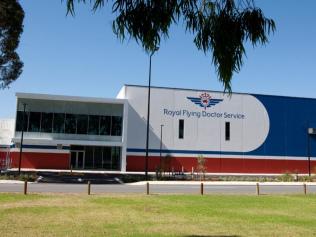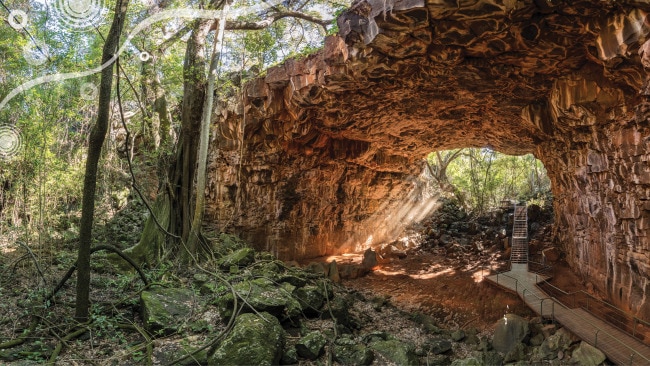Going the distance to improve patients’ lives
THE RFDS Telehealth service brings specialist clinical consults to remote communities.

THE RFDS Telehealth service brings specialist clinical consults to remote communities.
At 72, Ron Hick has grander ambitions for his retirement than regularly driving the 300km to Melbourne to treat his Type 2 diabetes.
These days, instead of an eight-hour round trip every three months, a visit to his endocrinologist takes just a five-minute journey from his home to the centre of Kerang, in the Mallee.
“When I was living in Melbourne, seeing an endocrinologist wasn’t a problem,” Hick explains. “I was a nurse in an emergency department and I was able to see the specialist at the hospital where I worked.
“Then I retired and moved to Kerang because it was more affordable after I divorced, but eventually the cost of travel built up. Fuel prices have gone up significantly in the last five to six years.”
Almost four years ago, his local diabetes educator suggested he try the Telehealth specialist and healthcare service offered by the RFDS. “I think because I was a nurse I had no hesitation to try new technology,” he says. “I was willing to give anything a go.”
The bulk-billed service uses a secure video conferencing system to connect patients living in regional areas with city-based specialists. The technology also confidentially shares test results, patient notes and appointment bookings. “This service uses secure video conferencing technology to allow us to connect rural patients with city-based specialists,” says Scott Chapman, RFDS Victoria Chief Executive. “It’s our aim, and has been since formation in 1928, that distance is no barrier for patients accessing essential health services."
The Telehealth session takes place at a medical clinic, with a local health professional present to offer support and help manage patients’ care outside of appointments. “I can’t fault it; it has made a lot of difference to my life because there’s less time wasted travelling and, quite frankly, the sheer boredom of driving to Melbourne and back,” says Hick, who devotes those now freed-up hours to his church and renovating his home.
“I have a blood test before my appointment, and then the Telehealth specialist has the results to tell me what we are going to do and whether I am being good or bad! There’s been a few occasions where they’ve been able to change my medication and we seem to have my condition working OK at the moment.”
His Kerang-based GP provides any scripts after the endocrinologist has decided on a course of medication. If an urgent specialist appointment is needed, it’s arranged within a week rather than the standard four-to-sixweek wait.
Initially, Telehealth was offered to just endocrinology patients but, in the past 12 months, it has also been rolled out to those needing experts in cardiology, respiratory health and psychiatry. “There’s a very big shortage of all of those specialists in rural areas, particularly in psychiatry, where there are huge public wait lists,” says RFDS Victoria health services manager Cassie Moore.
Following the success of the service in towns like Kerang, she says there are plans for greater expansion to ensure more regional and remote areas have better access to specialist care.
Hick is now just one of 360 patients who have engaged the Telehealth service since July last year to help treat their medical condition. He recently remarried and has since convinced wife Ester, who is also a diabetic, to use the service.
“I think it’s a bloody good idea,” he says. “I think you can get equally good results as a face-to-face appointment. It works well for me. I think after most people have tried it they will be hooked. This is the future.”
Positive signs for video trial
A new Telehealth system currently being trialled by the RFDS across the country will help to improve the lives of rural and remote Australians. This key tool helps the RFDS deliver primary healthcare services to those living in Outback Australia by linking users with RFDS doctors and specialists. The RFDS performed 88,541 Telehealth consultations in 2016-17, up from 62,712 in 2015-16. And, with one in six remote patients waiting at least two days to see a doctor for urgent medical care, and being 1.6 times more likely to die prematurely than those in metropolitan areas, the service has proven vital.
Now the service is being expanded to include video conferencing, with 14 communities from WA, SA/NT, QLD and NSW participating in a new trial to gauge the value of a “face-to-face” remote consultation with a doctor.
“The communities all receive primary healthcare services from the RFDS anywhere from weekly through to monthly visits. In between that now they’re going to get an additional Telehealth service for the off-week in between, where they get to see their same doctor but it’s just done by our Telehealth platform through videoconferencing,” explains Dr Lara Bishop, RFDS director of research and projects. “It allows that continuity of care, it allows the doctor to see someone on that ongoing basis and to really help them manage the conditions they have. So if something’s worrying them, they can have that consultation and, rather than having to do an emergency evacuation, the doctor can really talk to them about, ‘What is it we need to do? How can we manage this until we visit next time? Do we need to take you to hospital?’.”
The trial, held in collaboration with the University of Queensland and due to run until mid-2019, is being rolled out in a “stepped-wedge” format which sees one new clinic come on board per month.
“Any learnings you had from the month before about things that are working with technology, things that aren’t working – the doctors are able to share their learning and we’re able to share the learnings about technology to make it a little bit easier for the next clinic and the next,” Bishop says. “So you have a basic infrastructure but then you’re able to apply the learning from the previous month to make it more user-friendly.
“We’re trialling different models and, depending on what the RFDS clinic and the doctors want, the patient (can) accesses it from home or from a clinic. We’ll get to see what works with all of the different types of videoconferencing.”
With the trial still in its early stages, the results have yet to be confirmed but, Bishop says, the signs are positive.
“We only have the doctors’ experiences so far but it seems to be really accepted and embraced by the community as an additional service,” she says. “I’m hoping that continues. The feedback so far is that it’s working well.”
Originally published as Going the distance to improve patients’ lives


